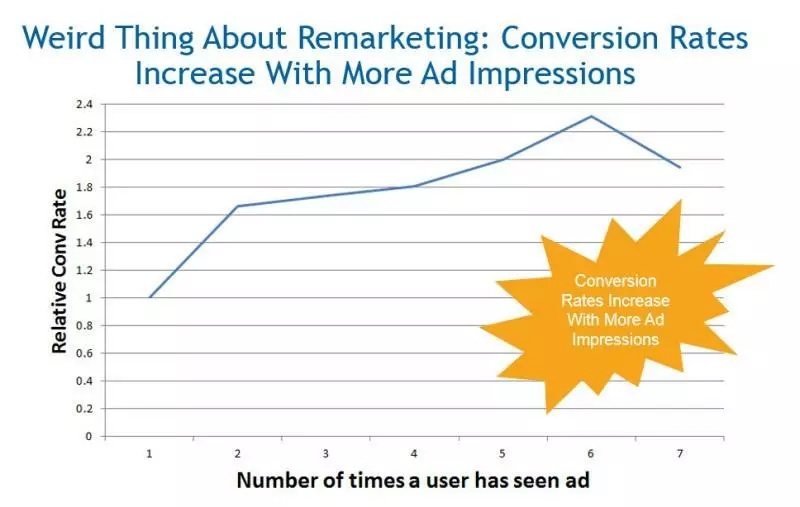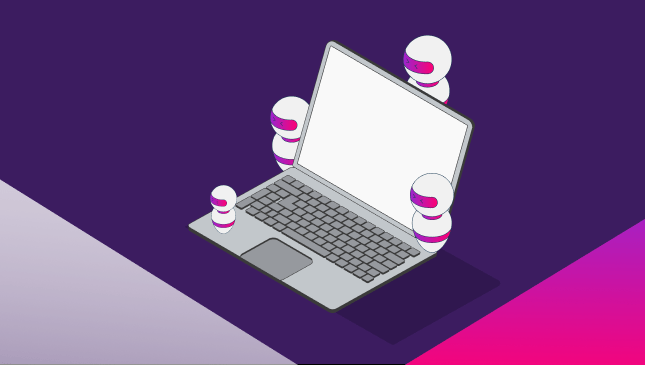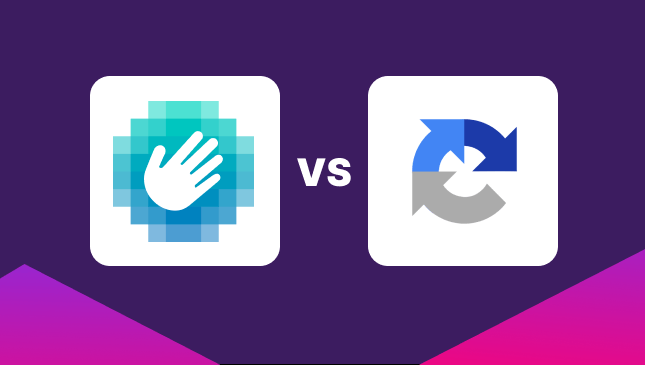Is Ad Fatigue Killing Your Marketing Campaigns?
Oli Lynch
|Marketing | October 04, 2023

We’ve all experienced it. That feeling when that ad comes on, AGAIN, you roll your eyes and swear to yourself that you’d never use that product or service because their advertising is so aggressive.
This is ad fatigue. And if you think that you’re going hard with your marketing, you might be committing the sin of ad campaign overkill and causing ad fatigue too.
There are several reasons you need to be careful of ad fatigue, and there are also ways you can avoid it.
In this article, we’ll take a look at what is ad fatigue, what causes it, and how you can avoid or prevent ad fatigue in your target audience with your advertising.
What is ad fatigue?
Ad fatigue is the oversaturation of your advertising so that your audience becomes bored of or, at worst, annoyed with your ads. This normally happens when people see the same ads repeated regularly or are heavily retargeted with the same content.
If your ad shows on every website banner, your video ad displays on every other YouTube preroll, and your Facebook Ads pop up every five minutes, well… People will quickly become desensitized or even frustrated with your marketing.
Marketers see this focused targeting and spending money to get the message out as a good thing. But for users, it can have the opposite effect.
And, as a marketer, the last thing you want is to put your audience off your product because you’ve annoyed them. So is there a thin line between persistent and effective ad targeting and being annoying?

What makes online advertising annoying?
For most internet users, the main complaint about online advertising is how intrusive it can be. This usually means that people find retargeting creepy, for example, with recently viewed products appearing in display ads across various sites. But it can also refer to how an ad interferes with their experience.
Of course, inappropriate or offensive ad content is also an issue for some.
Hubspot carried out research in 2016 asking ad blocker users why they chose to use blocking, and the top three responses were:
- Ads are annoying or intrusive – 64%
- Ads disrupt what I’m doing – 54%
- Security concerns, i.e., data misuse – 39%
For marketers, we can’t always dictate where our ads appear – as that is usually down to the publisher and the ad platforms.
But we do have power over our ad targeting, our ad budget, and, of course, the design of our ads.
Some ad fatigue stats
It’s estimated that the average American sees somewhere in the region of 4,000 to 10,000 ads every day, whether that’s from billboards, print ads, and other real-world or offline campaigns to the more obvious online ad campaigns.
Even if it is closer to the low estimate, that’s still a lot of ads.
Adding to this is the rise of digital out-of-home (DOOH) advertising – which is predicted to hit around $16 billion in ad spend by 2027. This means that even when we’re offline, we’re going to be exposed to more and more digital marketing.
In short, you need to make sure your ads don’t contribute to ad fatigue more than ever…

Digital fatigue and banner blindness
Adding to the issue of ad fatigue is the general issue of digital fatigue, or screen fatigue. This is where we spend so much of our waking time looking at screens that it impacts our health and makes us blind to other realities.
Within this is the fact that we consume hours of social media content, doom scroll 24/7 news, and binge-watch videos.
So increasingly, users experience what is referred to as banner blindness. This is where we subconsciously ignore the embedded ads within our view, mostly because we know exactly where they’re placed, and our brain blanks them out.
Most people know that the top of their favourite website will be loaded with ad banners, or that every third post on their social media feed will be an ad.
So even with the best intentions as a marketer, we’re already trying to overcome banner and ad fatigue in our audience before our ad has even been placed.
How long does it take for ad fatigue to happen?
Some sources suggest that ad fraud can occur within days – others might say within hours.
Of course, you can’t put a definitive measurement on the amount of time it takes for people to get bored of your ads. It will depend on how creative or amusing your ad is, who the ad is for, how you are targeting, where it is displayed, and your ad spend.
If you have a fun and witty ad that only crops up every few days across various ad platforms, you likely have a long shelf life.
But if you’re aggressively targeting audiences across multiple sites – you might see that ad fatigue set in quicker than you expect.
Scenario… You look at a pair of shoes; maybe you add them to your basket but never checkout.
Suddenly there it is… That same pair of shoes is displayed as an ad in your email, on the side banner of your news site, at the bottom of the video you’re watching, and between screen loads of the game you’re playing. Even in your social media feed!
You get the idea.
Is retargeting the problem?
You might have heard that retargeting and remarketing are effective ways to reach interested and engaged audiences. And you’d be right. Done properly, they are much more effective than generic display ads.
So the issue is not so much in the use of retargeting itself but in the approach and the campaign strategy.
A study by WordStream found that conversions using retargeting actually increase over time – with click-through rates and conversions hitting the sweet spot at around 6 ad views. After that, the conversion rate starts to drop.

So if it’s not retargeting that is the problem, what is the solution?
How can you avoid ad fatigue?
There are various ways you can reduce ad fatigue or even avoid it altogether. In very simple terms (the TL;DR before you start reading), avoid running your ads around the clock and rotate your ad campaigns to minimize the chances of your audience experiencing ad fatigue.
But we’ll take a look at how you can still run your advertising campaigns, reach your target market and see great results too…
1. Rotate your ads
Chances are you have lots of great ideas for ad content, and your creative team has put together some great variations of ad copy or display ads.
As part of your A/B testing, you should also rotate your different ads so that your audience doesn’t get banner blindness or straight-up ad fatigue.
The ad platforms, including Google and Facebook, all allow you to rotate your ads. In fact, some will even let you rotate ads on a timed basis – which can be as long as daily or weekly. But it’s best to keep your ad rotations relatively short because of the next point.
2. Monitor your reach and ad frequency
Although PPC ad campaigns can take a little while to warm up and deliver results, watching your metrics closely can help you nip any issues in the bud.
One of the key factors with ad fatigue is frequency, or seeing the same ad multiple times. Luckily, you can check this in Google Ads under Measuring reach and frequency, and also in Meta Ads with Controlling frequency.
Because we see a lot of social media ads, keeping tabs on the ad frequency on Instagram and Facebook can really help to stop ad fatigue or at least lower the threshold slightly.

3. Keep an eye on your clicks and impressions
Is your audience engaging with your ad campaigns? Although this might not be a key indicator of ad fatigue, it is a metric you must keep an eye on.
Getting tons of impressions but very low click-through rates?
Maybe your bounce rate for the latest campaign is bigger than the average for your business?
Although high bounce rates or low CTRs might indicate other problems, such as inefficient ad targeting or issues with your landing page, they can also help identify ad fatigue.
High bounce rates are also a sign of click fraud, meaning non-genuine or low-quality traffic is interacting with your ad campaigns. This actually affects 90% of Google Ads marketers and can be a costly problem for marketers in competitive industries.
You can find out all about how click fraud works and affects your business in our blog.
4. Make your ads fun
It might seem obvious to give your ads some humor or edgy appeal. However, there are many different ways to combat ad fatigue by harnessing the multimedia potential of display ads.
- Using dynamic ads or rich media content such as embedded video, games, or interactive elements is one way to up the fun levels
- With image ads, look for ways to create humor or some other form of emotional response – and use multiple variations so that you can rotate the banners regularly
- Educate or entertain – don’t sell. This is especially the case if you’re looking to expand brand awareness rather than generate sales
There are countless ways to improve how you create an engaging campaign that will hopefully not cause ad fatigue!
5. Vary your ad formats
Keep your ads fresh by using different advertising formats. For example, instead of relying heavily on Google banner ads or Facebook sponsored posts, try using:
- Video pre-roll
- Social media carousel ads (e.g., Instagram or Facebook)
- Rich media ads
- Partnerships on social media or YouTube
- Use other social media platforms such as Reddit, Twitch, or TikTok
But won’t this annoy people even more? I hear you cry…
So long as you’re not displaying the same creative across every platform, you could reduce ad fatigue while keeping your brand interesting.
The trick is to keep your content fresh and use ad rotation across all your ad platforms.
6. Change your CTA
Switching your call to action (CTA) might not be the cure for ad fatigue, but it can change how we see an ad. It’s also a good way to split-test which of your ads works better and can even give the same ad a new lease of life.
Some examples of using a different CTA might include:
- Switch ‘Sign Up’ for ‘Try for free’ or ‘Learn More.’
- Sub ‘Buy Now’ for ‘Get your [bargain product]’ or ‘I want it’
Play with your CTAs, and look at your ad copy and your brand’s most effective power words.
Improving ad performance
When it comes to PPC advertising, getting value for money, or more importantly, a return on ad spend, is one of the main concerns.
But when we’re battling not just ad fatigue but competition, banner blindness, and issues such as click fraud, you might start to wonder if you’re going to experience your own version of ad fatigue.
We’ve looked at many ways you can improve ad performance on this blog, so we’ll summarize some of our best tips for you.
- Define your target audience and create content for them. This applies to both your organic content and your paid ads
- Thumb stopping isn’t just for social media ads. But knowing how to create thumb-stopping content (especially for ads) is more important than ever
- Have a good creative strategy for your ads – wherever they’re displaying…
- Be aware of the influence of power words and how they can be used in your copy, your call to action (CTA), and your ads
- Protect your ads from click fraud and improve your cost per acquisition (CPA) with CHEQ.
As part of your advertising and marketing strategy, make sure to keep track of your traffic and block bots, competitors, and click farms from entering your funnels.
Run a free traffic audit with CHEQ Essentials – sign up for our no-obligation 7-day trial.










